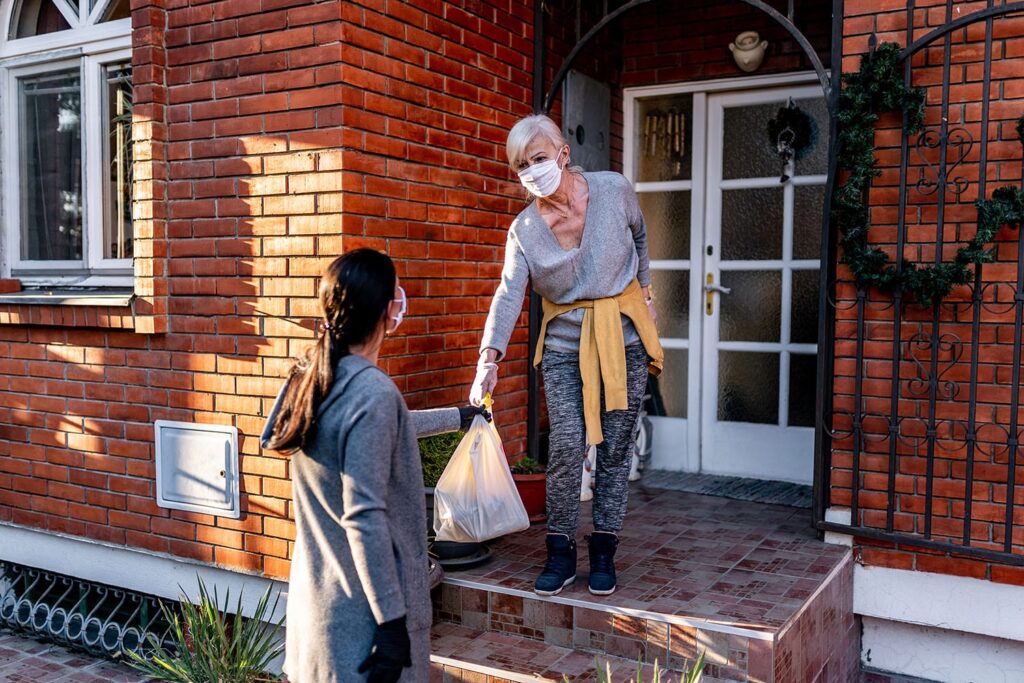
Not only have grocery stores remained open during the COVID-19 pandemic, but many have emerged as innovative leaders in addressing food insecurity.
By Jane Sarasohn-Kahn, MA, MHSA
For the past decade, grocery chains have been hiring dietitians, posting healthy recipes on their store websites, and expanding center-store aisles with more gluten-free food.
During the coronavirus pandemic, the grocery store has emerged a heroically staffed destination, affording hygienic shopping environments, quick social opportunities with the fishmonger and deli clerks, and household survival strategies bolstering the most basic of our human needs in the public health crisis: hunting and gathering food and cleaning supplies to fill our bellies and keep the virulent coronavirus at bay.
ALDI, Instacart and SNAP Benefits
ALDI, the Germany-based food chain, opened its first U.S. location in Iowa in 1976. The grocery retailer is expanding the role of the supermarket by empowering consumers’ ability to take charge of their health at home, addressing a social determinant of health whose risk factor has grown in the COVID-19 pandemic.
ALDI launched a collaboration with Instacart and SNAP benefit plans to enable the digital grocery e-commerce leader to connect their food security benefits from order to home delivery.
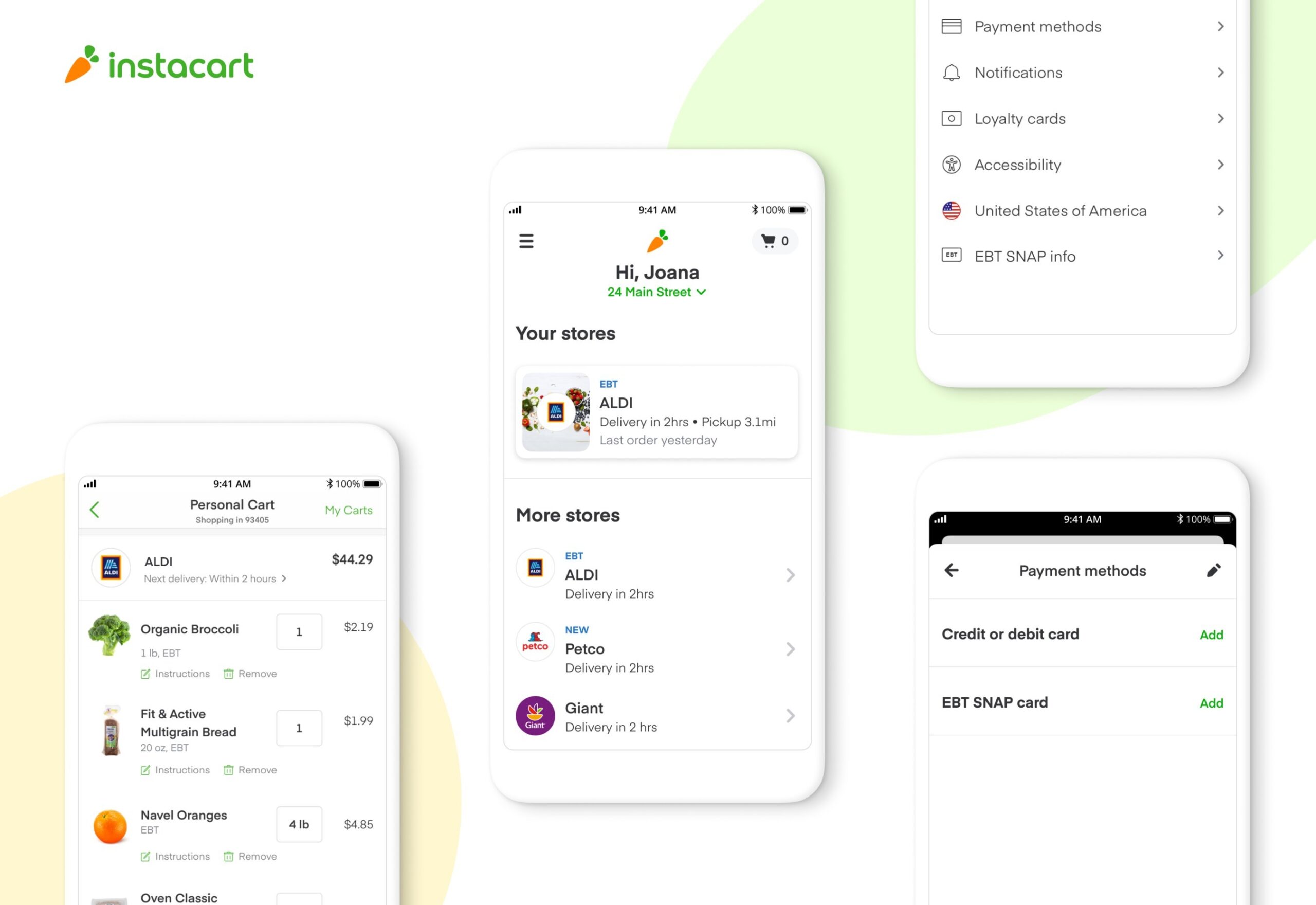
Food Insecurity in the Pandemic
Why is this alliance so impactful for health, especially in the wake of the pandemic?
Consider that food insecurity grew quickly in the early weeks of the pandemic. By March, mass media began to publish photos of long car lines queueing up for food in pantries, from Southern California to San Antonio and northward to New England.
The Association of American Medical Colleges (AAMC) calculated that 54 million people in the U.S.—including 18 million children—could become food insecure because of the pandemic. “Since food insecurity and poor nutrition are associated with several chronic illnesses that put people at higher risk for the more severe complications of COVID-19, the food access crisis threatens to exacerbate the already glaring disparities in health outcomes for vulnerable people, including low-income people, children, older adults, and immigrants living in the United States,” AAMC warns.
NPR called food security the “crisis within the crisis.”
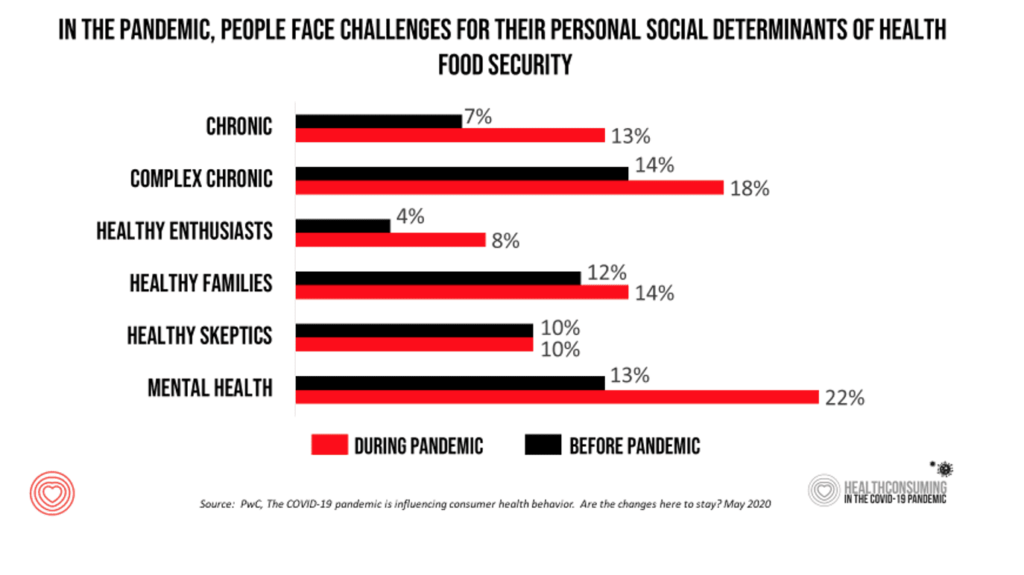
Food access emerged as a big risk for health across patient segments, shown in this chart from PwC’s research. In a study published in May, a few months into the pandemic, PwC surveyed health consumers and found that food security challenges worsened during the pandemic for most people.
The chart shows that people dealing with chronic medical conditions and mental health challenges were especially acutely at risk for food insecurity during the pandemic.
The Growth of Grocery Delivery
In its latest survey of consumers, fielded in September, TransUnion found that 32% of U.S. adults were postponing scheduling healthcare visits, whether procedures, checkups or treatments. This was 3 percentage points greater than the previous month, reflecting some consumers’ worries about contracting the coronavirus in public places as COVID-19 case numbers began to dramatically increase in July and August.
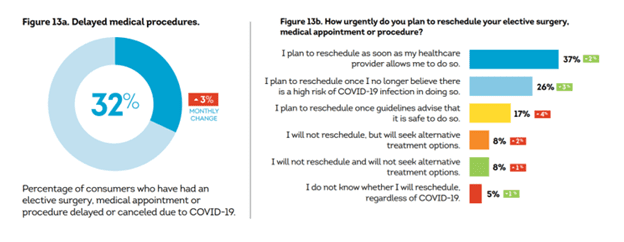
“FOGO,” the fear of going out, has been a consumer behavior impact since the start of the pandemic. Since March, one market signal of FOGO has been the dramatic growth of the online food delivery market. Here, Business Insider forecasts scenarios on the growth of digital grocery based on a “moderate” or “severe” projection of the pandemic’s persistence.
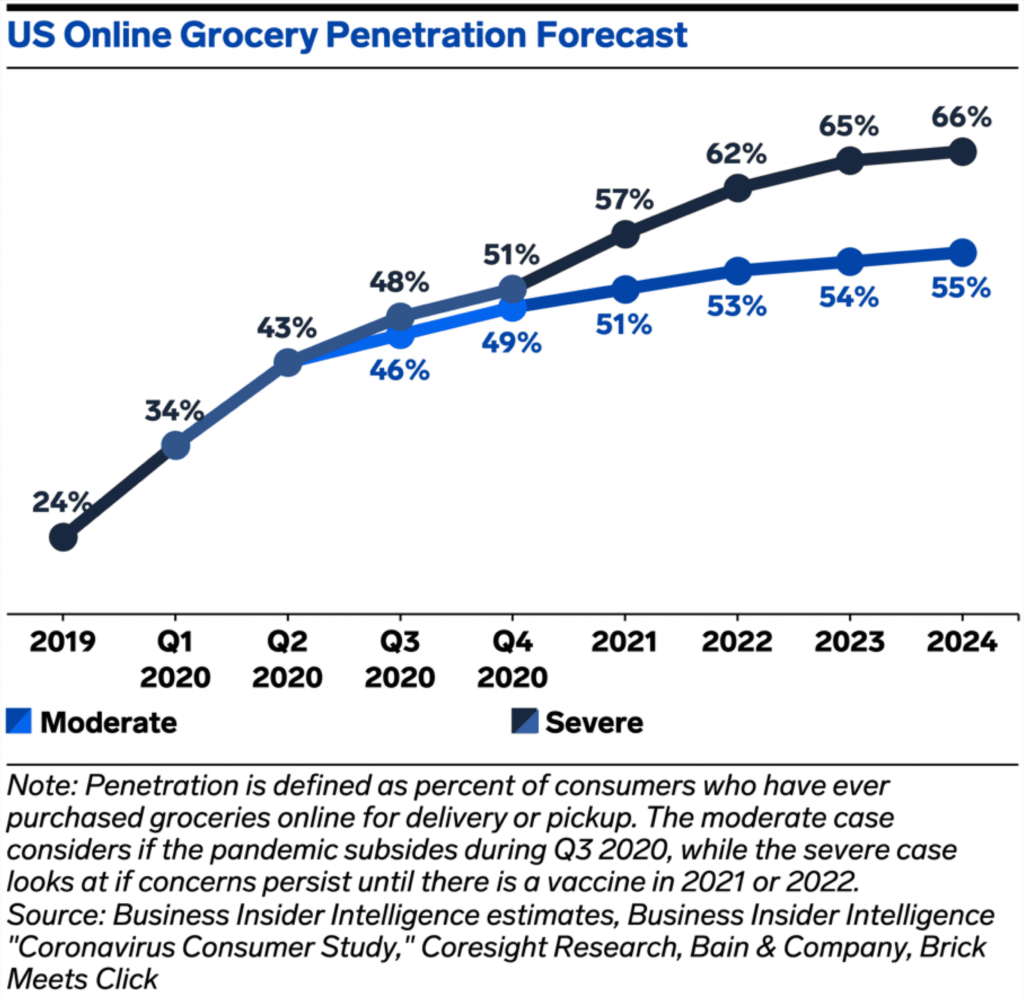
The pandemic has turbocharged consumer demand for digital food delivery, bolstering the prospects for companies like Instacart to serve their early-adopter convenience market of people moving to e-commerce for shopping in general and add new users who clicked on such companies’ links for the first time in finding personal health hacks in the COVID-19 pandemic.
The Growing Healthcare Ecosystem
Many retail touchpoints became “essential” to consumers in the pandemic. On March 19, the U.S. Department of Homeland Security’s Cybersecurity and Infrastructure Security Agency defined essential industries to include agriculture and food production, child care, energy, transportation, nonprofits and social service organizations, water and “critical retail.” This last category covered grocery stores, hardware stores, mechanics and other retail sectors.
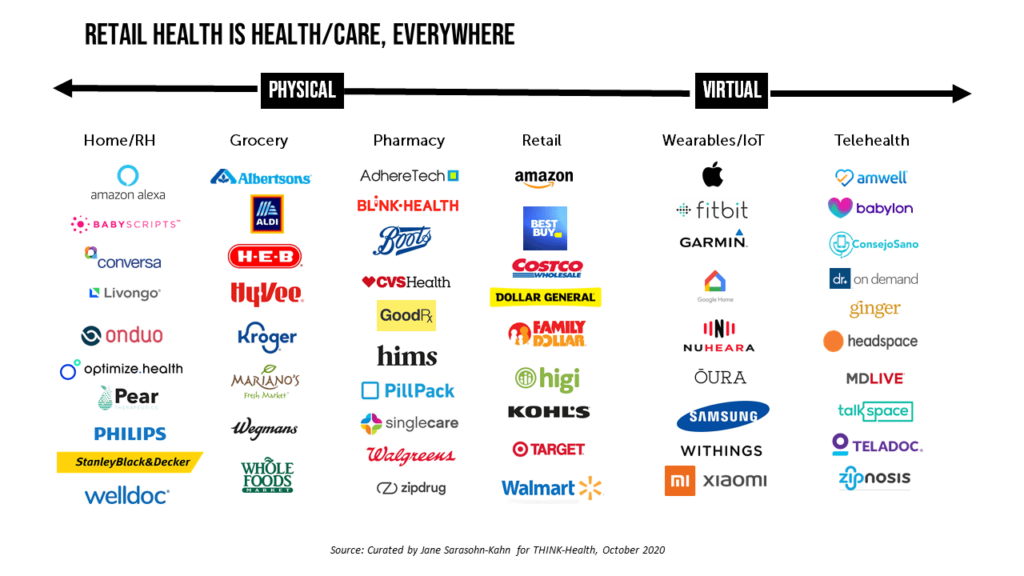
Regular readers of the Medecision Liberation blog may recognize this drawing, which I evolve on an ongoing basis as the “health/care, everywhere” landscape continues to expand and morph. The graphic is organized in columns that may move from physical to digital or virtual platforms, including home-based health tech, grocery stores, pharmacies, retailers, wearable tech and pure telehealth companies.
The pandemic has accelerated a blurring across these categories, such as ALDI (in the grocery category) moving toward e-commerce through Instacart, attending to people’s nutrition and health and the inequity of food deserts in many communities.
As we see in the PwC data, people managing chronic conditions and mental health issues have faced an even more acute food security challenge in the pandemic, which the ALDI-Instacart alliance can help address.
Looking to the future, I note that the Business Insider study expected that Walmart and Instacart were best positioned to “lead the pack” post-pandemic given Walmart’s massive brick-and-mortar network and Instacart’s wide reach thanks to its platform model. While Walmart is shown in my diagram as a “retailer,” the company has long been a healthcare provider through its large footprint in primary care clinics, pharmacies and health-beauty-wellness aisles, and its recent expansion into tele-mental health. Thus, Walmart crosses most of the verticals on my market map.
These trends were already in place as we entered 2020. The public health crisis has only quickened the pace of need for more care and services delivered in our homes and communities. The ALDI-Instacart program is a vivid symbol of the growing opportunities for creative collaborations for health that will persist well after the coronavirus is conquered in 2021.



About The Author: Jane Sarasohn-Kahn, MA, MHSA
Through the lens of a health economist, Jane defines health broadly, working with organizations at the intersection of consumers, technology, health and healthcare. For over two decades, Jane has advised every industry that touches health including providers, payers, technology, pharmaceutical and life science, consumer goods, food, foundations and public sector.
More posts by Jane Sarasohn-Kahn, MA, MHSA